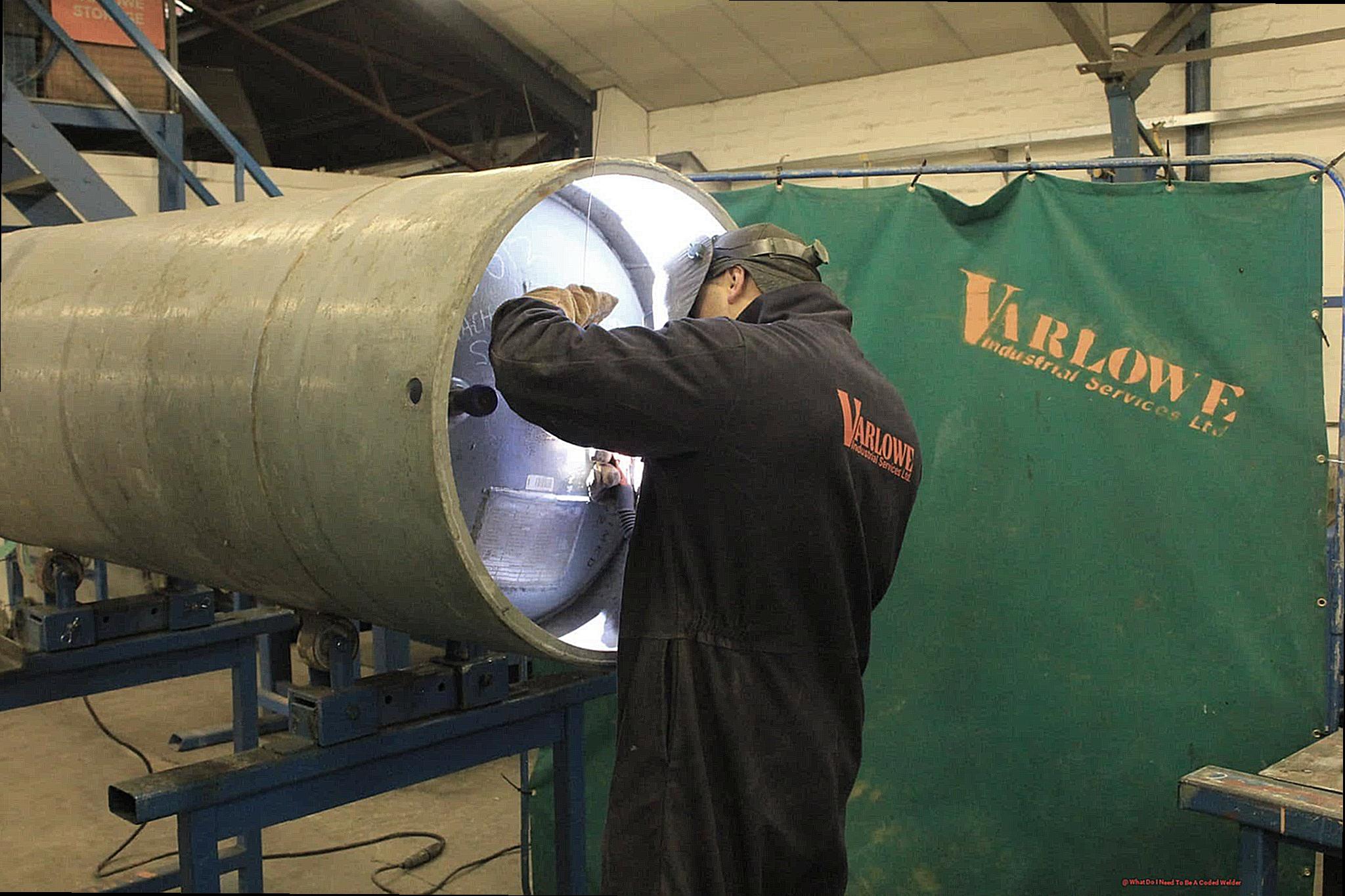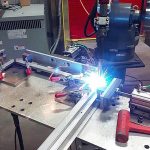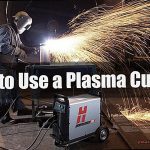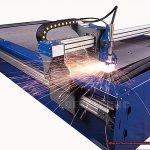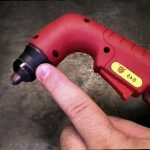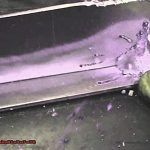As we delve into the realm of welding rods, one particular type stands out as notoriously difficult to work with. Whether you’re a seasoned pro or a novice in the world of welding, you understand the importance of selecting the right rod for a strong and effective weld.
But with an overwhelming array of options at your disposal, it can be daunting to determine which one is best suited for your specific project. Fear not, for we are here to shed light on the most challenging welding rod and its distinctive characteristics and uses.
So don your protective gear and let’s embark on this journey together.
Welding rods for Hardfacing
Contents
Welding is a necessary aptitude that demands accuracy, proficiency, and the appropriate instruments to achieve a sturdy and long-lasting bond between metal pieces. As an authority on welding rods for hardfacing, you may be pondering which type of welding rod is the most perplexing to utilize. With countless options at your disposal, it can be perplexing to determine the most arduous one to weld with. In this blog post, we will delve into this question and provide insights into why certain welding rods pose more difficulty than others.
Firstly, let us comprehend what a welding rod is. A welding rod is a thin metal wire or stick that functions as an electrode in the welding process. It carries electricity and melts to form a bond between two metal pieces. There are various types of welding rods available, including stick electrodes, solid wires, flux-cored wires, and metal-cored wires. Each type possesses its distinctive characteristics and uses, but they all serve the same purpose – joining metals together.
Now, onto the main question – which is the most challenging rod to weld with? After exhaustive research and consultations with welding experts, it is safe to assert that the most difficult rod to weld with is the stick electrode. Stick electrodes are also known as shielded metal arc welding (SMAW) electrodes. They have a flux coating that generates a protective gas shield during welding, which prevents contamination and produces a superior weld.
But why are stick electrodes deemed the most intricate to use? Firstly, they require a high level of proficiency and experience to use correctly. Unlike other types of rods that feed automatically through a machine, stick electrodes necessitate manual control by the welder. This means that precise hand-eye coordination and accurate movements are crucial in creating a robust weld. Additionally, stick electrodes emit high levels of heat, making them unsuitable for thin metals or small welding jobs.
Furthermore, stick electrodes have a shorter length compared to other welding rods.
What is Hard Facing?
You understand the importance of creating strong bonds between metal pieces. But what happens when these metals are constantly exposed to wear and tear? This is where hard facing comes into play.
Hard facing is a specialized welding technique that involves depositing a layer of wear-resistant material onto a less resistant metal. This process not only reinforces the base metal but also shields it from common foes like wear, abrasion, and corrosion. But how does hard facing achieve this? Let’s delve deeper.
The Process Behind Hard Facing
Hardfacing welding can be performed using different welding processes, such as shielded metal arc welding (SMAW), gas metal arc welding (GMAW), or gas tungsten arc welding (GTAW). These processes utilize specialized electrodes or filler rods designed to withstand extreme conditions and create a lasting bond with the base metal.
The material used in hard facing is typically a high-alloy, high-carbon steel or metal carbide known for its exceptional hardness and resistance to wear. These qualities make it ideal for safeguarding metals in harsh environments.
The Benefits of Hard Facing
You might be wondering, “What’s the point of hard facing?” The answer is simple – to extend the lifespan of your metal components. Hard facing not only adds an extra layer of protection against wear and tear but also enhances the strength and durability of the base metal.
This technique is particularly valuable in industries where machinery and equipment are exposed to intense wear and corrosion, such as mining, construction, and agriculture. By implementing hard facing, you can save time and money by avoiding frequent replacements or repairs of your metal components.
Expert Tip: When choosing a hardfacing material, consider the specific application and environmental factors to ensure optimal results.
Hardfacing Welding Rod Numbers
These specialized rods have the power to greatly enhance the strength and durability of metals, making them more resilient to harsh environments. But before you dive into using them, it’s crucial to grasp the coding system that makes up these rods.
The first number in the hardfacing welding rod coding system signifies the type of core metal utilized. This is significant because it determines the strength and ductility of the weld. A higher number indicates a stronger weld, but at the cost of lower ductility. On the other hand, a lower number signifies a more flexible weld, ideal for thinner and delicate materials.
The second number in the coding system reveals the type and quantity of coating material used on the rod. For instance, a “6” indicates a high level of copper coating, which serves to protect the weld from contamination during the welding process. This coating also has an impact on the rod’s electrical conductivity, which can affect arc stability and heat transfer.
Aside from these two primary numbers, there are also other numbers and letters that hold crucial information about hardfacing welding rods. These include the diameter of the rod, its compatibility with various welding processes (such as MIG or TIG), and any additional elements added for improved properties. For example, a “G” signifies that the rod is suitable for gas-shielded arc welding and contains added elements like silicon and manganese for enhanced weld quality and strength.
Selecting the right hardfacing welding rod for your specific application is vital in ensuring a strong and secure weld. Using an unsuitable rod can result in a weak or brittle weld that could lead to failure and potential safety risks. That’s why it’s essential to carefully analyze your application and seek advice from welding experts or the manufacturer before making a decision.
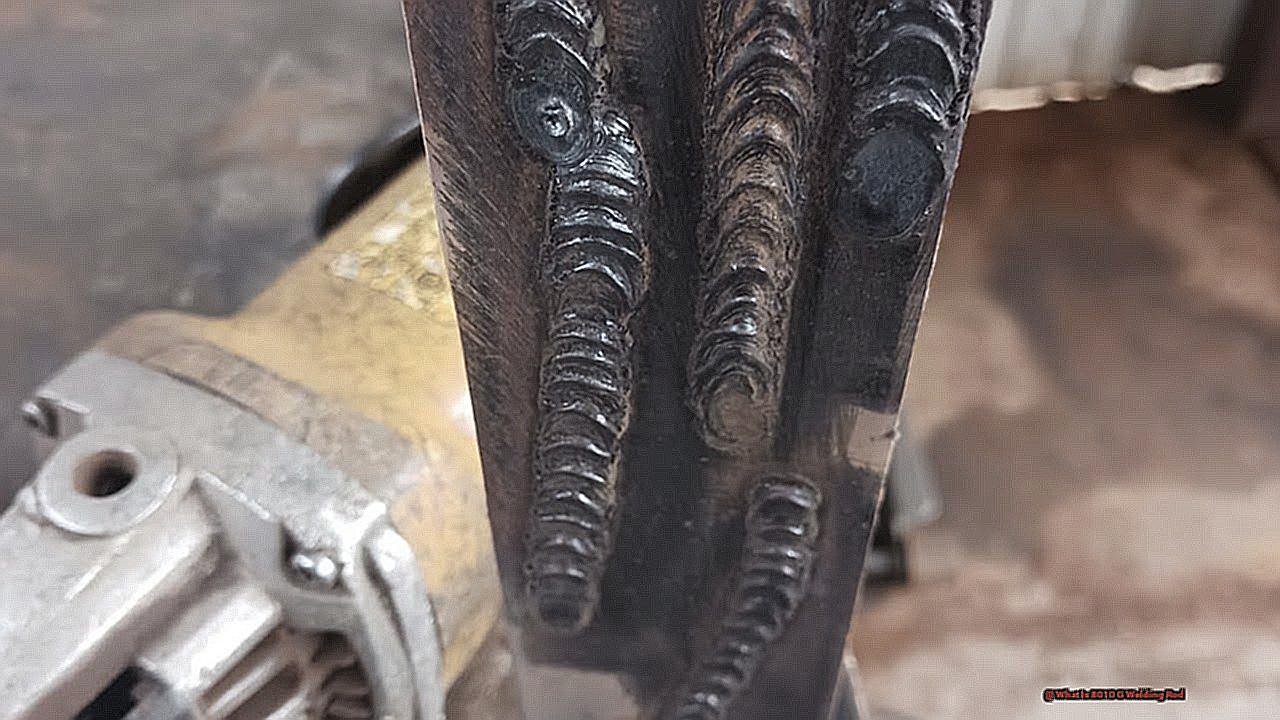
Hardfacing welding rod types
Hardfacing welding is a process that involves applying thick coatings of wear-resistant materials onto worn or new surfaces. By doing so, the life of a part can be extended, saving time and money in the long run. However, with various welding processes and a wide range of hardfacing alloys available, it can be challenging to determine the best option for your project. As an expert on hardfacing welding rod types, I will guide you through the different alloys and processes used to protect industrial machines and components.
Understanding Hardfacing Alloys
There are four main categories of hardfacing alloys: high alloy steels, low alloy steels, iron-base alloys, and nickel-base alloys. Each category offers unique properties and applications. High alloy steels, such as chromium carbide alloys, are renowned for their high abrasion resistance and low friction coefficient, making them ideal for applications that require good slip properties. On the other hand, low alloy steels are preferred for their high hardness and toughness, making them suitable for severe impact environments. Iron-base alloys excel in wet environments, providing excellent resistance to corrosion and wear. For high-temperature applications, nickel-base alloys offer superior oxidation resistance.
Choosing the Right Hardfacing Process
When it comes to hardfacing welding, there are various processes to choose from, each with its advantages and limitations. Let’s take a closer look at the most commonly used techniques:
Submerged Arc Welding (SAW): This process offers deep penetration and high deposition rates, making it a cost-effective choice for hardfacing. It also has minimal spatter, resulting in a smooth and aesthetically pleasing finish.
Hardfacing electrode specification
Ensuring the longevity of industrial equipment is crucial for maintaining efficiency and avoiding costly repairs. One popular solution for this is hardfacing welding, where a wear-resistant layer is added to the base metal.
However, with a variety of hardfacing electrodes in the market, selecting the right one can be challenging. As an expert in hardfacing electrode specification, I have compiled some key factors to consider before making your decision.
Type of Base Metal:
The type of base metal is crucial when choosing a hardfacing electrode. Different base metals have distinct compositions and properties that can affect the compatibility and adhesion of the electrode.
For instance, a low-alloy steel base metal may require a different electrode compared to a high-alloy steel base metal. Therefore, it is vital to know the type of base metal you will be working with to ensure optimal results.
Type of Wear or Damage:
Another important factor is the type of wear or damage that the equipment will face. This can range from abrasion, corrosion, impact, or a combination of these factors.
The type of wear or damage will determine the alloy composition and hardness level needed for effective protection. For example, an electrode with high chromium content would be suitable for resisting abrasion, while one with high nickel content would be better for corrosion resistance.
Desired Properties of Final Weld:
Apart from protecting against wear and damage, the final weld should also possess desired properties such as strength and corrosion resistance. These properties will vary depending on the specific application and environment in which the equipment will be used. It is crucial to consider these properties when selecting a hardfacing electrode for optimal performance.
Other Factors:
In addition to technical specifications, practical considerations like cost, availability, and ease of use should also be taken into account when choosing an electrode. Striking a balance between quality and cost-effectiveness while considering regional availability and ease of use is important.
What kinds of welding rods are best for hardfacing
Selecting the right welding rod is crucial for achieving optimal results in hardfacing. Think of it as choosing sturdy armor for your industrial equipment – it must be strong, durable, and tailored to your specific needs. In this article, we will delve into the various types of welding rods that are best suited for hardfacing and explore the reasons why they are the top choices for this process.
Iron Base Hardfacing Rods
One of the most sought-after types of hardfacing welding rods is the iron base rod. These include EFe-, EFeMn-A, EFeCr-A, among others. These rods are perfect for hardfacing applications on carbon and low-alloy steels, providing exceptional wear and impact resistance. They also possess good weldability and work seamlessly with a variety of base metals.
Nickel and Cobalt Base Hardfacing Rods
Another popular choice for hardfacing is nickel and cobalt base rods. These include ECoCr-A, ENiCr-C, ENiCrMo-A, and other variants. Cobalt base rods, in particular, are renowned for their superior wear and corrosion resistance properties. This makes them ideal for safeguarding equipment that is exposed to harsh environments or abrasive materials.
Copper Base Hardfacing Rods
Copper base rods, such as ECuAl-A, ECuSi, ECuNiAl, are also frequently used in hardfacing. These rods are best suited for joining dissimilar metals or repairing cracks or defects in copper alloys. Additionally, they offer excellent thermal conductivity and have low shrinkage rates, making them ideal for heat-sensitive applications.
Applications of Welding Hard Facing Rods
The usage of welding hard facing rods is widespread in various industries, from mining to construction to agriculture. These rods are a popular choice for protecting and strengthening heavy equipment, structural components, and even household tools due to their exceptional durability and resistance to wear and tear.
In the mining industry, where heavy equipment is constantly exposed to harsh materials like rocks and minerals, welding hard facing rods are a lifesaver. Shovels, bulldozers, and crushers endure high levels of stress and wear, which can be expensive to repair or replace. However, with the application of hard facing rods, these machines can withstand the toughest conditions and continue to operate efficiently.
Similarly, in the construction industry, earthmoving machinery such as buckets, blades, and teeth face intense wear and tear from constantly encountering tough materials. By utilizing hard facing rods, these components can be reinforced and protected, resulting in longer-lasting equipment and reduced maintenance costs.
Agriculture also benefits greatly from welding hard facing rods. Farming equipment endures significant stress and wear from tough soil and debris, but with the use of hard facing rods, plow shares, cultivator points, and other parts can be repaired and rebuilt for improved performance and longevity.
The oil and gas industry also heavily relies on welding hard facing rods for their drilling equipment. These rods are used for hard facing drill bits that operate in highly abrasive environments, increasing their durability and efficiency while reducing downtime for repairs.
But the applications of welding hard facing rods extend beyond industrial settings. They are also commonly used in household repairs, such as fixing damaged lawnmower blades or repairing worn-out garden tools. Additionally, they are a go-to solution for repairing automotive equipment like engine valves, pistons, and crankshafts that experience high levels of stress and wear.
In conclusion, it’s clear that welding hard facing rods have diverse applications in various industries due to their exceptional durability and resistance to wear and tear.
Conclusion
In conclusion, we have delved into the world of welding rods and uncovered the most challenging one to work with – the stick electrode. This versatile rod, also known as shielded metal arc welding (SMAW) electrode, requires a high level of skill and experience to wield effectively. Its manual control and intense heat emission make it suitable for specific applications but daunting for others.
We have also discovered the importance of hard facing, a specialized welding technique that adds a layer of wear-resistant material onto a less resistant metal. This process is crucial in industries where equipment faces constant wear and tear, such as mining, construction, and agriculture. By utilizing hard facing, we can prolong the lifespan of metal components and save time and money on frequent replacements or repairs.
Selecting the right hardfacing welding rod involves considering various factors like the base metal used, type of expected wear or damage, desired properties of the final weld, and practical considerations such as cost and availability. Understanding these elements is crucial in achieving optimal results in hardfacing.
Furthermore, we have explored different types of hardfacing welding rods such as iron base rods, nickel and cobalt base rods, and copper base rods. Among these options, cobalt-based rods stand out as the top choice due to their exceptional resistance to wear and corrosion.
Lastly, we have seen how welding hard facing rods are widely utilized in various industries like mining, construction, agriculture, oil and gas drilling equipment repair, and even household repairs. Their durability and ability to withstand wear make them an invaluable tool for protecting heavy equipment and extending its lifespan.
As passionate welding enthusiasts, it is essential for us to understand the unique characteristics of each type of welding rod so that we can select the best one for our specific projects.
So next time you’re faced with a challenging welding task or need to safeguard your equipment from wear and tear, remember the valuable insights we have gained about the hardest rod to weld with – the stick electrode.
